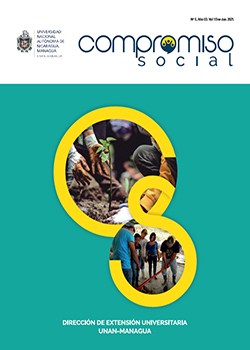Emerging educational strategies to strengthen higher education in Nicaragua: tensions and perspectives
DOI:
https://doi.org/10.5377/recoso.v3i5.13043Keywords:
Higher education subsystem, emerging educational themes, ICT, professional competences, emotional competencesAbstract
The questions that orbit in this article correspond to the concern of understanding Why educate? What are the fundamentals and methodologies for educating? But above all, the central question, who do we educate and how do we educate? From the analysis of documents in digital and institutional repositories; scientific journals, monographic theses and approaches by renowned authors in the field of education in Latin America, the need for the governments of the region is perceived to join efforts to explore and experiment in emerging strategies and themes that positively contribute to the resolution of the socio-economic needs in their respective contexts.
It is as a result of this analysis that the National Human Development Plan is retaken, assumed by the Government of Reconciliation and National Unity, between 2018-2021; which contemplates Education in all its forms, as a core axis of social development, from the local and national level, through creative, innovative and alternating strategies between the formal and non-formal fields. For this reason, the emerging themes that have taken hold in the field of education, have special interest in emotional, professional and digital competences, as implicit and explicit transversal lines within the curricula, didactics and methodologies in the spaces of the higher subsystem of most of the countries of the region, which, in a pertinent way, can contribute to the strengthening of the triumphant education of Nicaragua, positively impacting on the comprehensive skills of students and teachers, in public, private and community spaces.
403
Downloads
Published
How to Cite
Issue
Section
License
Copyright (c) 2021 Universidad Nacional Autónoma de Nicaragua, Managua (UNAN-Managua)

This work is licensed under a Creative Commons Attribution-NonCommercial-ShareAlike 4.0 International License.




